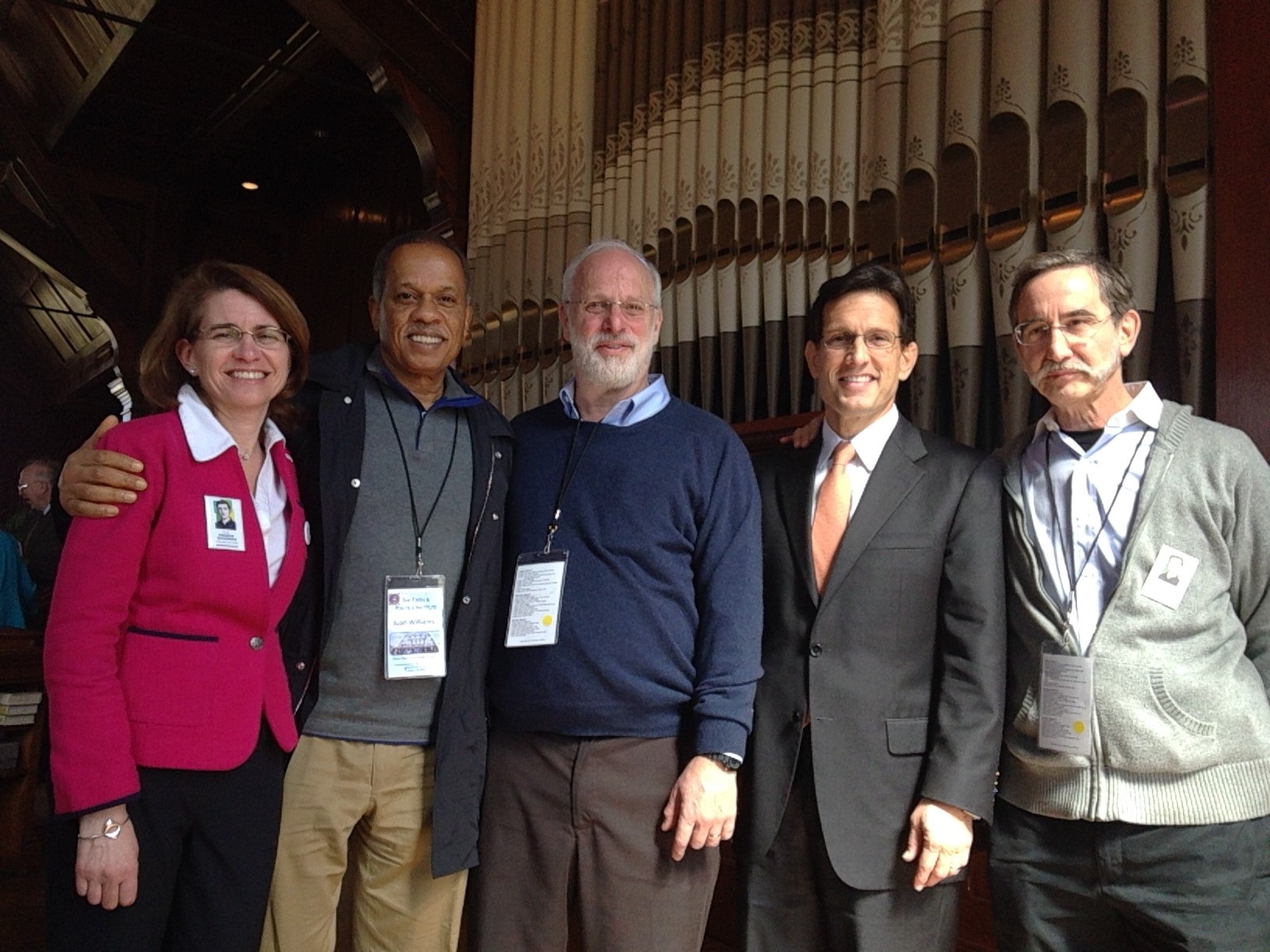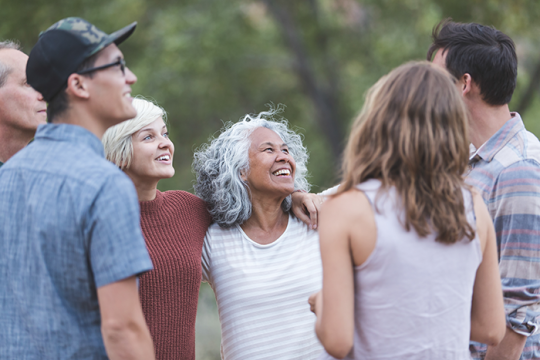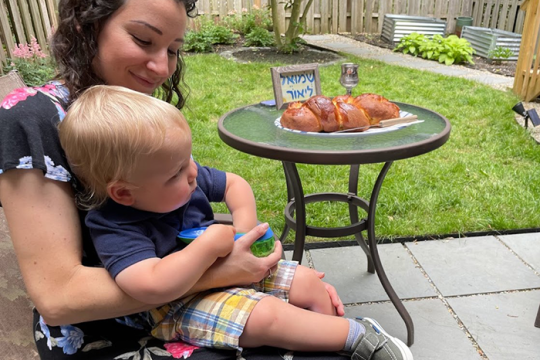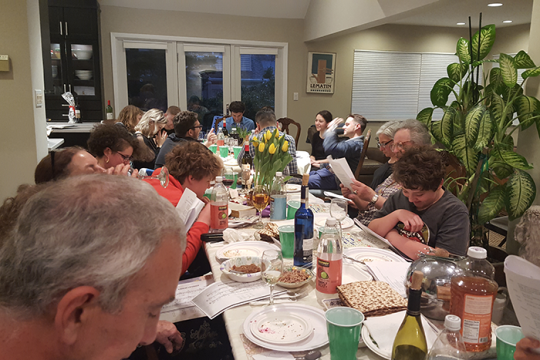
In the beginning of March, I, along with some 30 congressmen and senators, was privileged to be a participant in the 2014 Congressional Faith and Politics Civil Rights Pilgrimage to Mississippi and Alabama. Beginning in Jackson, MS, we commemorated the fiftieth anniversary of the “Freedom Summer,” a summer when more than 900 Caucasians joined African Americans from all over the United States to come to Mississippi and Alabama in order to register African-American voters. The Pilgrimage ended in Selma, AL, with a recreation of the famous voting rights march from Selma to Montgomery. This march took place 49 years ago.
In Jackson, we went to the home of the assassinated civil rights hero, Medgar Evers, and heard remembrance from his widow, Myrlie. On the trip, I also met David Goodman, whose brother Andrew was killed in 1964 along with another Jewish man, Michael Schwerner, and an African-American man, James Earl Chaney. In the chapel at Tougaloo College, I chanted El Male Rachamim, a funeral prayer for the four murdered activists, which was quite a moving experience.
I am proud to know that many of those who came to Mississippi and Alabama during the “Freedom Summer” of 1964 were Jews (including a member of our congregation). It is estimated that of the 900 who came to Mississippi, some 500 were Jews. I am also proud of the fact that so many rabbis were involved in the civil rights movement in those years. One, Rabbi Arthur Lelyveld, was severely beaten in Hattiesburg, MS.
In Selma on March 7, 1965, some 600 civil rights activists began a march from Selma to Montgomery Alabama. At that time, only 2% of the African Americans in Alabama were registered to vote. The march began at Brown Chapel Church. When the marchers arrived at the Edmund Pettus Bridge over the Alabama River, they were met by Alabama State Troopers who, after telling them to turn back, proceeded to charge the marchers and beat them with clubs. Seventeen were hospitalized, including a young (now-Congressman) John Lewis, who had a concussion. This event became known as “Bloody Sunday” in the annals of American Civil Rights history.
Two weeks later on March 21, a second march took place. President Lyndon B. Johnson had federalized the Alabama National Guard, which protected the 3,200 marchers. Dr. Martin Luther King, who led the march, urged faith leaders to join him in Selma. His friend Rabbi Abraham Joshua Heschel and other prominent rabbis heeded the call. It is estimated that 450 clergy took place in that march. A famous picture shows Dr. King, Rabbi Heschel, Ralph Bunche, Rev. Ralph David Abernathy, and John Lewis marching together arm in arm across that bridge.
For the past 14 years, Congressman John Lewis and the Faith and Politics Institute in Washington, D.C. have organized a symbolic march from Brown Chapel Church to the other side of the Edmund Pettus Bridge. Forty-nine years after “Bloody Sunday,” I, along with the elected representatives, was privileged to participate in the commemoration of this event.
While there were other clergy on the trip, I was the only rabbi, and I am grateful to Senator Kay Hagan for nominating me to be a part of this incredible pilgrimage. While I was the only rabbi on the trip, I was not the only Jew. Accompanying me on the trip were Jewish politicians Congressman Susan Davis (D-CA), Jan Schakowsky (D – IL), and Eric Cantor (R-VA). During my time on this incredible trip, I had a chance to speak with these and other congressmen, including Minority Leader Congressman Steny Hoyer (D-MD) and Congressman John Lewis (D-GA). I even interviewed Congressman Lewis concerning the 1965 march with Dr. King and Dr. Heschel.
It was indeed a thrill to recreate the march from Brown Chapel Church to the Edmund Pettus Bridge, an I could not help but notice that many of the Alabama State troopers who were providing security were African American. How times have changed!
But then again, maybe not? When we stopped at a rest stop after crossing the Alabama border, we saw racist and anti-Semitic graffiti in the restroom.
During this holiday of Passover, I am reminded once again that from our perspective as Jews, as long as there are those who lack the freedoms we cherish – as long as there are those who suffer from the “slaveries” of poverty, abuse, lack of healthcare, restricted voting and more – our own freedom is not complete. On Passover, we tell the story of our liberation. In Selma, I felt that I was a part of the recreation of the African American story of liberation. This was an incredible experience and honor!
This year, Passover will have an added meaning for me. When we read, “In every generation, a Jew is required to feel as though he or she was liberated from Egypt,” I will add, “and from Selma!”
A zissen Pesach – a happy and joyous Passover to all!
Related Posts

Harnessing the Power of our Mothers Around the Seder Table

Melding Tradition and Innovation: Our Interfaith Toddler Naming Ceremony


